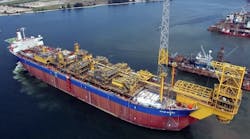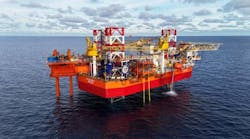Gene Kliewer - Technology Editor, Subsea & Seismic
The feature of the 2009 Seismic Vessel Survey is the entrance of Polarcus onto the list of companies. That also brings the list of new vessels for 2009 and beyond to eight – Polarcus has three scheduled for delivery this year and three for delivery in 2010 while WesternGeco has two scheduled for this year. Additions and deletions of vessels to the list bring the total number accounted for to 173, compared with 169 on the 2008 tally. This is an increase of four vessels, or slightly less than 2.5%.
Launched in 2008, Polarcus is investing in a seismic fleet of high-end 3D and multipurpose 3D/source vessels. The company says it expects to operate worldwide providing towed marine contract acquisition services and multi-client projects. The first 12 streamer 3D vessel is scheduled to be operational in 3Q 2009, with all six vessels fully operational within 2010. Headquarters is in Dubai.
“We have a pure play strategy focusing on the marine towed streamer seismic acquisition business, coupled with a strong commitment to minimize our environmental impact in the performance of our work, leaving the lowest possible environmental footprint,” the company says.
WesternGeco will bring its vessel total to 22 with the addition of theColumbus and Magellan scheduled this year. That total puts WesternGeco at the top of the vessel count by company. Second is CGGVeritas with 20 followed by Global Geophysical and PGS Marine both with 16.
One merger currently being conducted involves CGGVeritas acquisition of Wavefield Inseis. At this writing, CGGVeritas was in the process of acquiring the last remaining shares of Wavefield which it did not purchase following a voluntary offer. Upon completion of the merger, the resulting company will have 28 vessels, the largest fleet among seismic survey contractors.
Some changes in vessel construction plans hinge on timely completion of construction. It also is possible that some construction and renovation could be canceled owing to the world financial market conditions now as compared to the circumstances at this time last year.
As an illustration, Petroleum Geo-Services ASA (PGS) last year responded to speculation regarding vessel construction by discussing termination rights in contracts for newbuilds 532 and 533 at Factorias Vulcano, Spain, and the related contracts governing the charter parties between Arrow and WesternGeco.
After amendments made in 2008, the shipbuilding contracts with the yard set delivery of Nov. 30, 2008, and March 31, 2009. If either 532 or 533 were delayed more than 120 days, Arrow would notify WesternGeco that Arrow has a right to terminate the shipbuilding contract with the yard. WesternGeco then could either choose to terminate the charter party with Arrow or instruct Arrow not to terminate the shipbuilding contract. Further, if either or both of the construction contracts were canceled due to late delivery, Arrow would receive repayment from the yard of all investments made to that date.
The nature of the surveys undertaken today is changing. According to WesternGeco, recent advances in processing capabilities are allowing sophisticated seismic data migration methods to become standard practice.
Dave Nichols, Houston-based research director, says improvements in imaging are taking advantage of the increases in computer capacity that enable imaging techniques that are closer to the ideal wave equation. They also benefit from new acquisition geometries that extend the frequency bandwidth and offset and azimuth range of recorded data.
New acquisition geometries such as wide-azimuth, multi-azimuth, rich-azimuth, and Coil Shooting single-vessel full azimuth acquisition increase illumination of the subsurface from a wider range of angles and azimuths. These techniques enhance the accuracy of the inversion of seismic data for Earth properties. In addition, increasing the frequency bandwidth by lowering the minimum frequency of seismic sources has improved steep-dip imaging and overall resolution.
Migration techniques that honor the actual physics of wave propagation are an important factor in improving image quality, Nichols continues. There are two main trends active here: reverse-time migration and anisotropy. Both have been studied for many years, but only now are adequate computer resources available to make use of these tools in an integrated approach of imaging and Earth property determination.
In the future, the industry will have to go beyond correctly positioned images and deliver estimates of absolute Earth properties. In a traditional compressional-wave, or P-wave, workflow, this process has been split into two parts: acoustic-imaging algorithms that yield accurate Earth reflectivity and elastic reflectivity inversion that provides a model of the Earth properties.
“We will continue to ride the wave of computer power,” Nichols says. “When I joined the company almost 15 years ago, we were at 10s of megaflops. We have seen a million-fold increase in computer power. I expect to see another thousand times increase before I retire.”








